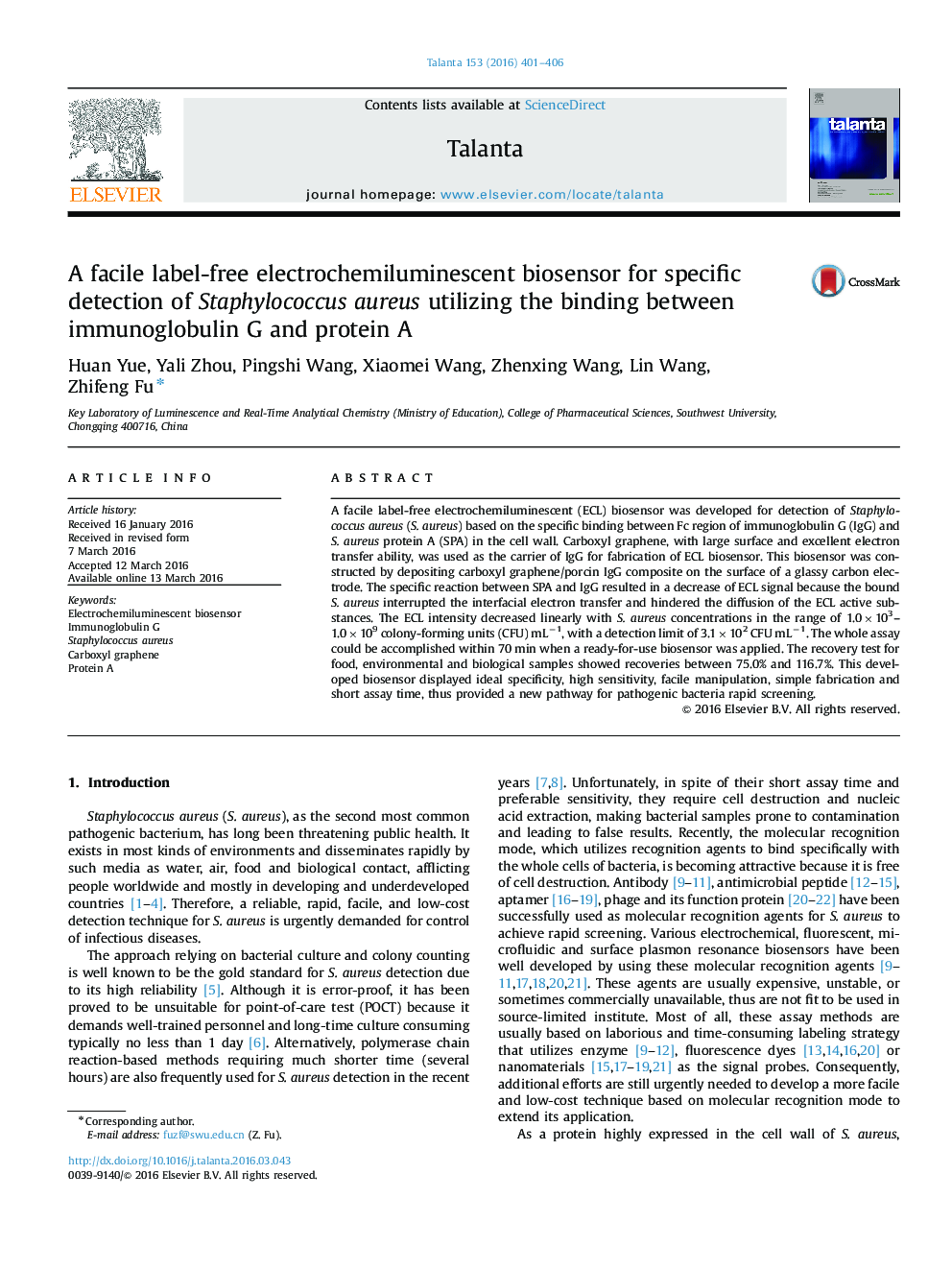| کد مقاله | کد نشریه | سال انتشار | مقاله انگلیسی | نسخه تمام متن |
|---|---|---|---|---|
| 1242601 | 1495782 | 2016 | 6 صفحه PDF | دانلود رایگان |

• An ECL biosensor was developed for detection of S. aureus utilizing the binding between IgG and SPA.
• Probe labeling is not required for this biosensor based on molecular recognition.
• This biosensor provided a new pathway for pathogenic bacteria rapid screening.
A facile label-free electrochemiluminescent (ECL) biosensor was developed for detection of Staphylococcus aureus (S. aureus) based on the specific binding between Fc region of immunoglobulin G (IgG) and S. aureus protein A (SPA) in the cell wall. Carboxyl graphene, with large surface and excellent electron transfer ability, was used as the carrier of IgG for fabrication of ECL biosensor. This biosensor was constructed by depositing carboxyl graphene/porcin IgG composite on the surface of a glassy carbon electrode. The specific reaction between SPA and IgG resulted in a decrease of ECL signal because the bound S. aureus interrupted the interfacial electron transfer and hindered the diffusion of the ECL active substances. The ECL intensity decreased linearly with S. aureus concentrations in the range of 1.0×103–1.0×109 colony-forming units (CFU) mL−1, with a detection limit of 3.1×102 CFU mL−1. The whole assay could be accomplished within 70 min when a ready-for-use biosensor was applied. The recovery test for food, environmental and biological samples showed recoveries between 75.0% and 116.7%. This developed biosensor displayed ideal specificity, high sensitivity, facile manipulation, simple fabrication and short assay time, thus provided a new pathway for pathogenic bacteria rapid screening.
The recognition of Staphylococcus aureus by immunoglobulin G resulted in a great decrease of electrochemiluminescent emission and was utilized to develop a label-free biosensor for Staphylococcus aureus detection.Figure optionsDownload as PowerPoint slide
Journal: Talanta - Volume 153, 1 June 2016, Pages 401–406